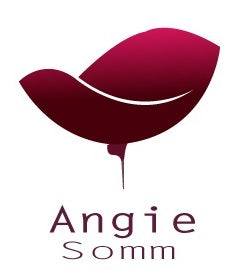“Every wine tastes the same to me!” This is a lament I often hear from friends, acquaintances, and clients who want to be more educated wine connoisseurs and really taste the differences in wine. When asked how to go about doing this, I always ask a few things to clarify exactly what they mean. There are major differences in wine and then there are minor differences in wines. If someone can’t taste ANY difference in wine and they ALL taste the same, I have to assume they’re not telling the truth. Anyone can tell that there’s a difference between a German Riesling at 7% alcohol content with a floral, peachy, sweet taste and a California Zinfandel with a 16.5% alcohol content that’s dark-fruited, dense and jammy. If you can’t tell there’s a difference between these two wines, I’m going to assume your taste buds aren’t working!
Most of the time, what people are really asking is “How can I learn to taste the minor differences in wine?” I love this question because a lot of people just assume this is a talent you’re born with and that it can’t be learned and I get to prove them wrong! There is plenty of propaganda out there mystifying the so-called “super tasters” and making the general public believe this is unattainable. This simply isn’t true. Here is how you can start learning to tell the minor differences in wine.
First, start off big. You’re going to get discouraged if you try to taste the differences in two different Cabernets from California, so start with wines that have major differences. It’s easier to compare apples to oranges than it is apples to apples! Master the art of major differences before moving on to the more minor ones.
Second, taste wines side by side as much as you can. Trying to compare a wine that you’re drinking now to one you drank a month ago is just not effective. Human memory is notoriously unreliable, so the best way to develop your palate is with real-time comparison of different wines.
Note: Being able to describe what you’re smelling and tasting can be somewhat of a challenge if you’re a beginner. If this is an issue for you, I recommend you watch my previous video: Five Easy Tips to Help You Talk Confidently About Wine. This will help you build up your wine vocabulary and understand how to turn your senses into words! I also encourage you to subscribe to my channel as I will continue to share new tips on wine tasting.
Next, as your confidence builds, you can work toward more minor difference. Here’s an example of what this progression may look like:
- Level 1 - Start off by being able to tell the difference between a Cabernet Sauvignon and a Chardonnay.
- Level 2 - Move on to being able to tell the difference between Chardonnay from the USA to Chardonnay from France.
- Level 3 – You find French Chardonnay intriguing, so you taste it from even smaller regions in France and compare (Chablis, Meursault, Puligny Montrachet, etc.)
- Level 4 – Going further into just one region, say Chablis, now you compare the differences between each individual vineyard inside Chablis.
It doesn’t have to stop at level 4, either! You can go on to discover the differences in vintages, producers, and many countless minor differences in wines, makes this a never-ending and super enjoyable journey for your palate.
Finally, remember it’s about the journey and the enjoyment of wine. Learning to tell the differences will help you understand your palate to a certain level, but don’t feel stressed about getting it perfect or comparing your own skills and knowledge to other people’s. This really can suck the fun out of appreciating wine, and I don’t want that to happen to you! Having fun and enjoying is what wine is made for.
Watch Video here - https://youtu.be/pqNwepb9Hwg

